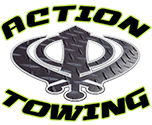Tow trucks are an indispensable part of the vehicular transportation and recovery industry. Their design and functionality are tailored to efficiently handle various tasks from roadside assistance to vehicle recovery after accidents. Each component of a tow truck plays a critical role, combining strength, precision, and reliability. In this article, we discuss the anatomy of a tow truck, exploring its key components, their functionalities, and their importance in the towing process.
Safety: The Paramount Importance of Each Component
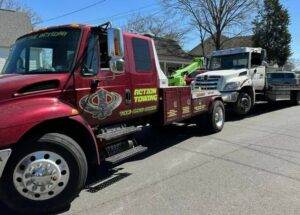 The safety of the tow truck driver, as well as the vehicles being towed, hinges on the proper functioning of each component of the tow truck. The tow winch, for instance, is a crucial component that helps maintain control and balance of the vehicle being towed, preventing it from swaying or tipping over, which could lead to accidents.
The safety of the tow truck driver, as well as the vehicles being towed, hinges on the proper functioning of each component of the tow truck. The tow winch, for instance, is a crucial component that helps maintain control and balance of the vehicle being towed, preventing it from swaying or tipping over, which could lead to accidents.
The boom, another critical component, must be sturdy and reliable as it lifts and moves vehicles. A faulty boom could jeopardize the safety of the tow truck driver, other road users, and the vehicle being towed. The tow sling, on the other hand, is used to pull vehicles out of ditches or other difficult areas. It must be strong enough to withstand the weight of the vehicle without breaking or detaching.
The wheel lift is used to elevate the vehicle’s wheels off the ground, keeping it steady during the towing process. If this component fails, it could lead to the vehicle falling off while in transit, causing serious damage.
In essence, each component of a tow truck plays an integral role in ensuring the safety and efficiency of towing operations. Any compromise in the functionality of these components can lead to dangerous situations for the tow truck driver and damage to the vehicles being towed, emphasizing the importance of regular maintenance and prompt repairs.
Chassis
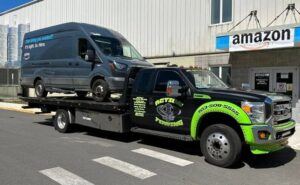 Tow trucks generally use heavy-duty truck chassis, designed to ensure durability and the ability to withstand heavy loads. The size and strength of the chassis vary depending on the truck’s purpose, ranging from towing sedans to large tractor-trailers (Oshawa Towing, n.d.).
Tow trucks generally use heavy-duty truck chassis, designed to ensure durability and the ability to withstand heavy loads. The size and strength of the chassis vary depending on the truck’s purpose, ranging from towing sedans to large tractor-trailers (Oshawa Towing, n.d.).
The chassis is more than just a structure; it’s the foundation on which every other component of the tow truck is built, much like the skeleton in the human body. An integral part of the tow truck, the chassis has to be robust and flexible to withstand the immense pressure and weight of towing vehicles. It provides the necessary rigidity, ensuring that the tow truck can navigate uneven terrains and harsh road conditions without compromising its structural integrity.
Furthermore, the chassis needs to distribute the weight of the towed vehicle evenly across the truck’s body, ensuring stability during transit and enhancing the safety of the operation. This is why the chassis is considered the backbone of a tow truck – its design, strength, and durability directly impact the overall performance and safety of the towing operation.
Boom
The boom is an integral part of a tow truck, used for lifting and towing vehicles. There are different types of booms, such as fixed, rotating, and telescopic. Rotating booms, commonly known as rotator wreckers, are used in heavy-duty applications like tractor-trailer wrecks (Custom Built Manufacturing, 2019). The versatility of the boom design allows for the efficient handling of vehicles in various scenarios.
The boom is truly the heart of a tow truck, so much so that without it, there could be no tow truck. The boom’s primary function is to lift and tow vehicles, a task central to the very purpose of a tow truck. Without a boom, the truck would be incapable of performing its vehicle recovery and movement functions.
Even in scenarios where vehicles are not fully hoisted off the ground like in the case of a wheel lift or flatbed operation, the boom’s role is irreplaceable. It provides the necessary leverage to lift the vehicle onto the wheel lift or flatbed. In more complex recovery scenarios, where vehicles may be stuck in ditches or off-road terrains, the boom’s functionality becomes even more critical. With the variety of booms available, including fixed, rotating, and telescopic, the tow truck can adapt to handle various situations efficiently. Thus, the absence of a boom would render the tow truck ineffective, undermining the very essence of its existence.
Winch
Winches provide the pulling power necessary for vehicle recovery. They consist of a drum and a cable or chain and can be hydraulic or electric. The choice between a hydraulic and an electric winch depends on the tow truck’s size and its intended use. Winches are fundamental in securing and pulling vehicles onto the truck bed (Oshawa Towing, n.d.).
One of the most important functions of the winch is to keep the towed vehicle stable and prevent it from swaying or tipping over. It works in conjunction with other components such as the wheel lift, boom, and tow sling to ensure that the vehicle being towed remains secure throughout the towing process. The winch also aids in controlling the speed at which the vehicle is being towed, ensuring safe and smooth operation.
Tow Dollies
Tow dollies are supplementary components designed for towing vehicles with only two wheels on the ground. These lightweight platforms provide stability and support during transportation.
Tow dollies are attached to the towed vehicle and used when the towed vehicle has flat tires or non-operational wheels. If the front two wheels of the towed vehicle are lifted with a wheel lift, tow dollies can be placed on the back wheels if those wheels are not operational.
Tow dollies are especially useful for moving vehicles that have damaged wheels or are non-operational, offering an alternative when traditional towing methods are not feasible (Oshawa Towing, n.d.).
Controls and Hydraulics
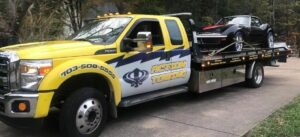 The controls and hydraulics of a tow truck are the nerve center of its operation. These systems enable operators to maneuver the boom, control the winch, and adjust the bed’s height and angle. Tow trucks are equipped with a variety of controls, including joysticks, levers, and switches, allowing for precise and efficient operation of the vehicle’s various components. The hydraulic systems, in particular, provide the necessary power and flexibility to handle heavy loads with ease (Oshawa Towing, n.d.).
The controls and hydraulics of a tow truck are the nerve center of its operation. These systems enable operators to maneuver the boom, control the winch, and adjust the bed’s height and angle. Tow trucks are equipped with a variety of controls, including joysticks, levers, and switches, allowing for precise and efficient operation of the vehicle’s various components. The hydraulic systems, in particular, provide the necessary power and flexibility to handle heavy loads with ease (Oshawa Towing, n.d.).
Hydraulics are crucial to a tow truck’s operation as they provide the force needed to lift and transport heavy vehicles. Hydraulic systems accomplish this by utilizing the principles of fluid mechanics, where pressure applied at one point is transmitted to another point, allowing for the amplification of force. This crucial feature enables tow trucks to lift weights far beyond what would be possible with human strength or even other mechanical systems.
Moreover, hydraulic systems offer smooth and precise control, allowing the operator to adjust the force as needed. This is particularly essential during complex recoveries, where finesse is as important as raw power. Furthermore, hydraulic systems are reliable and require relatively little maintenance, contributing to the overall efficiency and durability of tow trucks.
The hydraulic system’s contributions to a tow truck’s functionality are significant, enabling the vehicle to perform its duties efficiently and safely. Without a well-maintained hydraulic system, a tow truck would be unable to carry out its essential tasks of vehicle recovery and transportation.
Light Bars and Beacons
Visibility is a key safety aspect in towing operations. Tow trucks are equipped with light bars and beacons to ensure they are visible, especially during nighttime operations or in inclement weather conditions. These lighting components are crucial for alerting other drivers on the road and ensuring compliance with traffic regulations (Oshawa Towing, n.d.; Custom Built Manufacturing, 2019).
Safety Equipment
Safety equipment is paramount in the towing industry. Tow trucks are fitted with various safety features, such as chains, straps, hooks, and winch lines, to secure vehicles during transportation. Additionally, they often carry traffic cones, warning signs, and emergency lighting to create safe working zones around the towing site. This equipment is essential for protecting both the tow truck operator and the vehicle being towed (Oshawa Towing, n.d.).
Additional Key Components
Wheel-Lifts
Wheel lifts are essential for lifting either the front or rear wheels of a vehicle off the ground for towing. The design and nature of the wheel lift depend on the type of tow truck, with heavier trucks often featuring under lifts for lifting the axle or frame rather than the wheels (Custom Built Manufacturing, 2019).
Integrated Systems
In integrated tow trucks, the boom and wheel lift are combined into a single unit. This design increases the truck’s versatility, allowing it to perform a wide range of towing tasks with fewer vehicles (Custom Built Manufacturing, 2019).
Advantages of Using Integrated Tow Trucks
Integrated tow trucks offer several key advantages that make them an attractive choice for many towing scenarios. The combined boom and wheel lift design provides unmatched versatility, allowing operators to handle a wide range of towing and recovery tasks.
- Increased Flexibility: The integrated design of the boom and wheel lift facilitates adaptability in diverse towing scenarios, from simple roadside assistance tasks to complex recovery operations. This flexibility makes integrated tow trucks a valuable asset in any fleet.
- Efficiency: With the ability to perform multiple towing tasks using a single vehicle, integrated tow trucks can deliver significant operational efficiency. This translates into time savings, reduced fuel consumption, and lower overall costs.
- Improved Safety: The integrated design also offers enhanced safety. The combined boom and wheel lift system provides superior vehicle control during towing, reducing the risk of accidents or damage to the towed vehicle.
- Durability: Integrated tow trucks are built to withstand the rigors of challenging recoveries and long-distance tows. This durability ensures reliable performance and extends the service life of the truck.
The advantages of using integrated tow trucks are undeniable. Their flexibility, efficiency, safety, and durability make them an excellent choice for a variety of towing and recovery operations.
Outriggers and Stabilizers
Outriggers and stabilizers are used to increase the lift capacity and stability of a tow truck. These components are particularly important during heavy-duty recovery jobs, providing a wider support base and enhanced lifting capabilities (Custom Built Manufacturing, 2019).
Forks and Receivers
Forks and receivers are smaller but crucial towing accessories. They ensure smooth operation and can be customized to fit specific towing needs, enhancing the truck’s overall efficiency (Custom Built Manufacturing, 2019).
Types of Tow Trucks
Different types of tow trucks are designed for specific towing needs:
Flatbed Tow Trucks
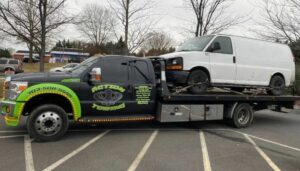 Flatbed, or rollback tow trucks, feature a flat platform that can be inclined or lowered for easy loading and unloading of vehicles. They are versatile and can transport a wide range of vehicles, from cars to motorcycles (Wikipedia, 2023).
Flatbed, or rollback tow trucks, feature a flat platform that can be inclined or lowered for easy loading and unloading of vehicles. They are versatile and can transport a wide range of vehicles, from cars to motorcycles (Wikipedia, 2023).
Wheel-Lift Tow Trucks
These trucks use a lifting mechanism to raise the vehicle’s wheels off the ground. They are compact and maneuverable, ideal for urban environments (Wikipedia, 2023).
Integrated Tow Trucks
Integrated tow trucks, designed for heavy-duty towing, combine a boom and a wheel lift. They are capable of towing large vehicles like trucks and buses (Wikipedia, 2023).
Boom Tow Trucks
Boom tow trucks are equipped with an extendable boom arm for rescuing vehicles in challenging situations, like those stuck in ditches or off-road locations (Wikipedia, 2023).
Operational Efficiency and Safety
Tow trucks are designed for operational efficiency and safety. The integration of various components like winches, booms, and control systems ensures that towing operations are conducted smoothly and securely. Safety is a top priority, with equipment and procedures in place to protect the tow truck operator, the vehicle being towed, and other road users (Oshawa Towing, n.d.).
Tow Trucks with Cranes: A Modern Innovation
Tow trucks with cranes represent a significant advancement in towing technology. These dual-purpose vehicles combine the functionality of a conventional tow truck with a heavy-duty crane, offering exceptional versatility. The crane arm, usually hydraulically operated, extends the truck’s capabilities, enabling it to lift heavy objects, machinery, or vehicles in challenging positions. This integration of a crane into a tow truck offers time and cost savings, adaptability, a minimized footprint, enhanced safety, and efficiency in urban environments, making them invaluable in both construction and municipal applications (Tow Crane, n.d.).
Advanced Control Systems
Modern tow trucks are equipped with sophisticated control systems, including hydraulic, electrical, pneumatic, and remote-control systems. These systems provide precision and ease of use, allowing operators to manage towing equipment safely and efficiently. Hydraulic systems are particularly beneficial for their ability to deliver accurate control over large weights. Electrical systems offer quicker response times and enhanced precision, while pneumatic systems, though less common, provide simplicity and reliability in specialized towing situations. Remote control systems add an additional layer of safety and maneuverability, enabling operators to manage operations from a secure location (A & A Towing, n.d.).
Auxiliary Equipment and Safety Considerations
In addition to the primary components, tow trucks are equipped with auxiliary equipment that plays a vital role in ensuring safe and efficient operations. Outriggers and stabilizers provide stability during lifting and towing, while lighting and signaling devices enhance visibility and communication on the road. Toolboxes and storage compartments are essential for organizing and maintaining tools and equipment necessary for various towing situations (A & A Towing, n.d.).
Understanding Different Types of Tow Trucks
Exploring the diversity of tow trucks is crucial for understanding their specific applications. From the traditional hook-and-chain tow trucks, used mainly for moving damaged or abandoned vehicles, to the cutting-edge flatbeds and wheel lifts, each type of tow truck has unique features and capabilities suited to different towing needs and scenarios (Engineering, 2023).
Tow Truck Design and Functionality
The design and functionality of tow trucks are tailored to meet specific requirements and challenges of the towing industry. Each component, from the chassis to the boom, winches, and control systems, is designed to maximize efficiency, safety, and versatility. Understanding these design elements is crucial for tow truck operators, as it helps them select the right equipment for the job and operate it safely and effectively (ECTTS, n.d.).
The Risks Associated with Different Tow Trucks
While tow trucks are designed for efficiency and safety, they also come with inherent risks. Different types of tow trucks, such as flatbed, wheel-lift, integrated, and boom tow trucks, each carry specific risks related to their operation and functionality. Understanding these risks is essential for tow truck operators and businesses, emphasizing the importance of proper training, maintenance, and insurance (Prime Insurance Company, n.d.).
Conclusion
The design of a tow truck is a clear demonstration of ingenious engineering and functional aesthetics. Each element, from the sturdy chassis, extendable booms, and powerful winches to the advanced control systems, plays a unique part in transforming tow trucks into the backbone of roadside assistance and vehicle recovery services. As the demands of the towing industry evolve, so too do the design and capabilities of these incredible machines, securing their position as indispensable tools for effective vehicle recovery.
Comprehending the intricate design of a tow truck illuminates the complexity and adaptability of these vehicles. Every single part plays a significant role in ensuring towing operations are carried out efficiently and safely. From the solid chassis to the technologically advanced control systems, tow trucks are remarkable feats of engineering that are vital for the smooth functioning of our road networks.
References
Custom Built Manufacturing. (2019). Anatomy of a Heavy Duty Wrecker. Retrieved from https://www.custombuiltmfg.com/2019/10/30/anatomy-of-a-heavy-duty-wrecker/
Oshawa Towing. (n.d.). Understanding The Vital Components Of A Tow Truck: A Comprehensive Guide. Retrieved from https://oshawatowing.ca/tow-truck-guide/
Wikipedia. (2023). Tow truck. Retrieved from https://en.wikipedia.org/wiki/Tow_truck
A & A Towing. (n.d.). Exploring Tow Truck Anatomy: A Comprehensive Guide to Towing Equipment and Tools. Retrieved from https://a-atowing.com/exploring-tow-truck-anatomy-a-comprehensive-guide-to-towing-equipment-and-tools/
Engineering. (2023). 6 Types of Tow Trucks: Usage & Best Practice. Retrieved from https://engineerine.com/types-of-tow-trucks/
Prime Insurance Company. (n.d.). The Different Types of Tow Trucks and Their Risks. Retrieved from https://www.primeis.com/education-center/articles/the-different-types-of-tow-trucks-and-their-risks/
Tow Crane. (n.d.). Tow Trucks with Cranes: Dual-Purpose Solutions for Towing and Lifting. Retrieved from https://www.towcrane.com/tow-trucks-with-cranes-dual-purpose-solutions-for-towing-and-lifting/
ECTTS. (n.d.). Towing Parts, Towing Supplies & Recovery Equipment. Retrieved from https://parts.ectts.com/towing-parts-towing-supplies-vehicle-recovery/
